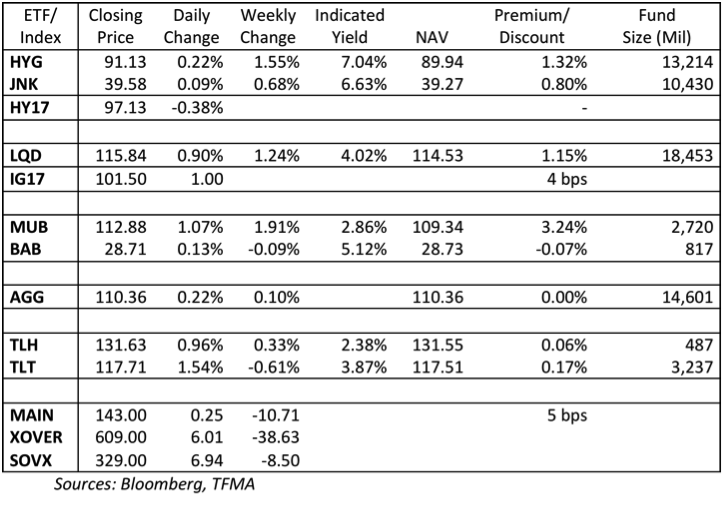Daily Credit ETF and Index Summary (12.01.27) – HY Unstoppable?
Wow, yesterday saw an almost jaw dropping inflow in the HY ETF’s. Over $400 million came into HYG and JNK yesterday, bringing the YTD total to over $3.3 billion. The inflows on Wednesday were also large, guess everyone read the Fed Statement and decided it was necessary to chase yield?
I am very cautious the ETF’s here. We are at levels in HY that may be tough to break through. Institutional investors have difficulty allocating capital to high yield at these levels because the cost of capital is too high relative to the returns. Hedge funds will need to use leverage to buy decent bonds and generate a 10% return. Individual credit selection matters here. We are seeing more divergence in equities and that should occur in credit too. Too much is priced in the market as a whole and I believe individual credit selection is becoming more important than it has been in a long time. Bond selection is also important. With many bonds trading at high prices with limited upside (due to callability), picking the right individual bonds will also make a different. If you are committed to high yield here, it is time for individual bond selection, or mutual funds. The liquidity in HYG and JNK is nice, but they are trading rich and just don’t give the individual credit and bond selection I would want at these levels. They also have no chance of getting new issue allocations, which may be a decent part of any returns in the near term.
A quick look at the top 10 holdings of HYG.
The portfolio is looking very “barbelled”.
Harrah’s is yielding almost 16% and First Data is yielding almost 13%. These two both trade well below par and are “story” credits. They are in the index HYG is benchmarked to, so they are appropriate to be in HYG, but I’m not sure they would be my first choices – I would want to own them up here only if someone is taking a good hard look at them.
The Intelsat 11.25’s are a bond I would not own. They are tracing at 102.5 right now. They have a final maturity of 2017, but are already trading to their 2015 par call, and are getting close to trading to their 102.8125 call in 2 years. You see real upside capped on these bonds. They have a nice coupon, but the capped upside is important to pay attention. In spite of yielding an eye-popping 10.25% they don’t really have much price appreciation potential here. These bonds are near the bottom of what is a complex capital structure. They 85 back in November. How much of the price appreciation is deserved, or is some portion a function of ETF demand? I’m not bullish on yields here, but if I was, I don’t think this is a bond I would pick, the risk/reward seems wrong. I could be wrong, but here is where I would want active management making the decision.
At the other end of the spectrum, there are 2 CIT bonds, both yielding 6.5% and 2 HCA bonds, yielding 6% on average. Neither seems bad, but neither seems great, and although these companies are large, I can’t help but wonder if they aren’t over represented in the top 10 holdings because they are easy for dealers to get their hands on when trying to create shares to meet investor demand.
The Clear Channel bond is interesting. It has a 9.25%, is priced at 110.33, but is callable in December at 106.9375 (106 15/16ths). It shows up on the I-Shares website as having a yield to maturity of 7.07% which is correct, but it also shows up as having a yield to worst of 7.07% which is incorrect. The yield to worst (the December call) is only 4.88%. That is not the only mistake I saw in the “yield to worst” column on the I-shares website (they have the YTW of the First Data bonds, higher than the YTM – which by definition is impossible). I’m not sure how much I trust the yield to worst data, which makes me concerned that the portfolio is paying a current yield much higher than the yield to worst, making NAV price drops more likely as bonds experience the pull to par.
Sprint and Calpine round out the top 10.
On the Credit Indices, single names have outperformed the past couple of days and the “richness” has diminished a bit. That is encouraging – or at least a sign that the squeeze is moving into the next level of “hedge” trades.

